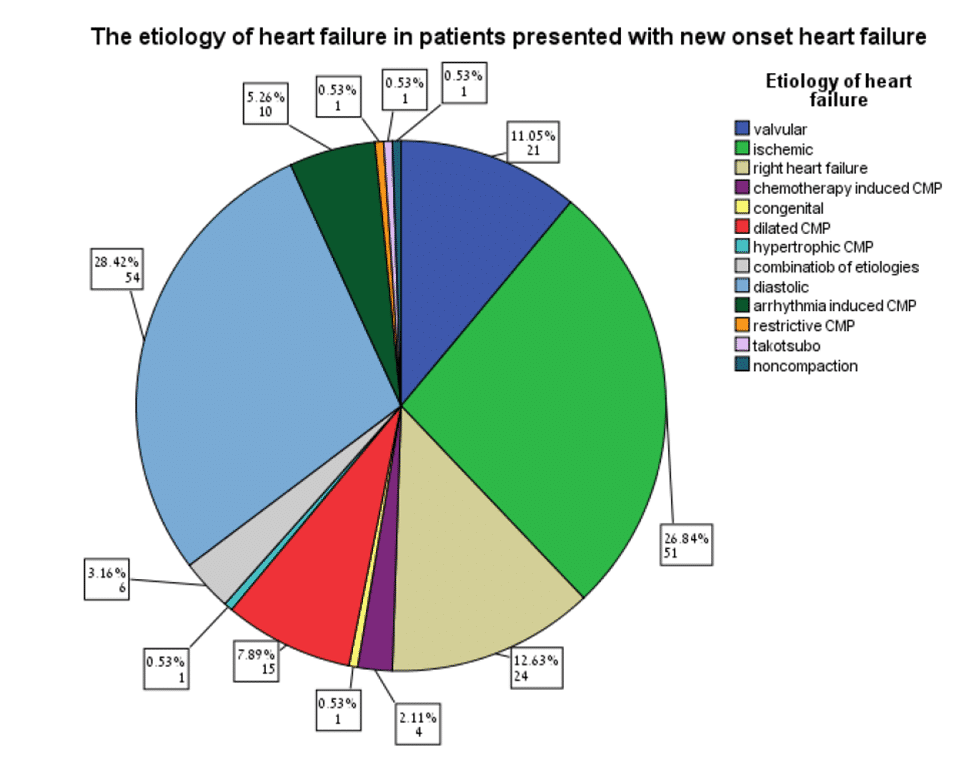
Incidence of Arrhythmia Induced Cardiomyopathy and Predictors for Recovery
2Medicine, Tel-Aviv University
Introduction: Arrhythmia induced cardiomyopathy (AIC) is a reversible cause of heart failure (HF).Incidence, factors associated with and predictors for recovery are not fully elucidated.
Aim: To investigate the incidence of AIC in patients hospitalized with acute decompensated HF and evaluate predictors for recovery.
Methods: We screened 819 patients who were hospitalized due to HF during the year 2012 at the Sheba Medical Center. Patients with AIC were identified according to the following definition: LV dysfunction with LVEF<50% with concurrent tachyarrhythmia, where recovery of LV function (an increase of at least 15% in LVEF) was expected after either rhythm or rate control of the arrhythmia. Patients were further divided into 2 groups (early or late recovery) with respect to median time to recovery. In order to evaluate predictors for recovery we also analyzed data of 43 AIC patients that were followed-up since 2012.
Results: During 2012 ten patients were diagnosed with AIC. Accordingly, the incidence of AIC in patients hospitalized with acute decompensated HF and new onset HF was 1.2% and 5%, respectively. In fact, the incidence was even higher among patients with new onset dilated cardiomyopathy, reaching up to 40%. Using binary logistic regression, elevated heart rates during admission (OR:0.93, C.I 0.87-0.99) and high systolic pulmonary artery pressures (SPAPs) (OR:1.15, C.I 1.05-1.29) were found to be predictors for early and late recovery, respectively .
Conclusions: AIC is a relatively common entity among patients presenting with newly diagnosed heart failure. Predictors for early recovery of LV function include high heart rates during admission and low SPAP by echocardiography. Further prospective studies are required in order to better define factors associated with AIC and predictors for recovery.



Powered by Eventact EMS